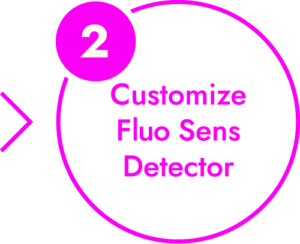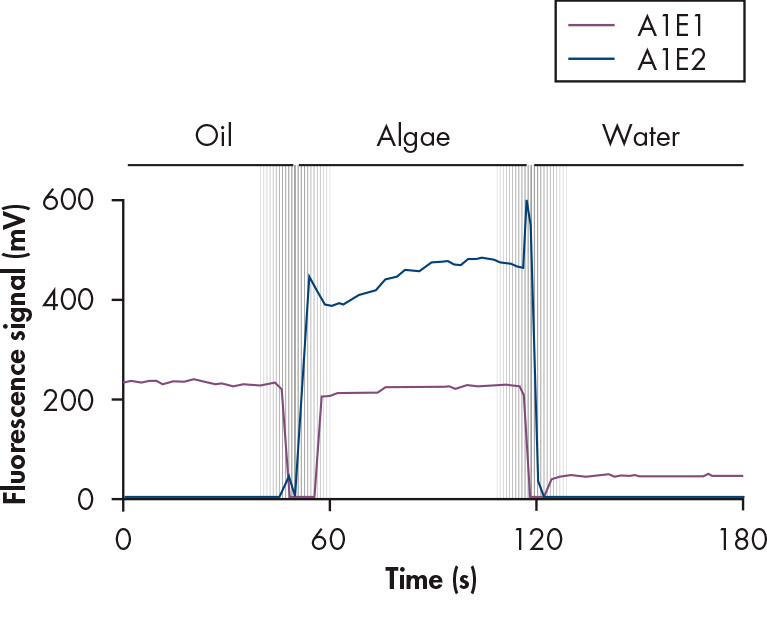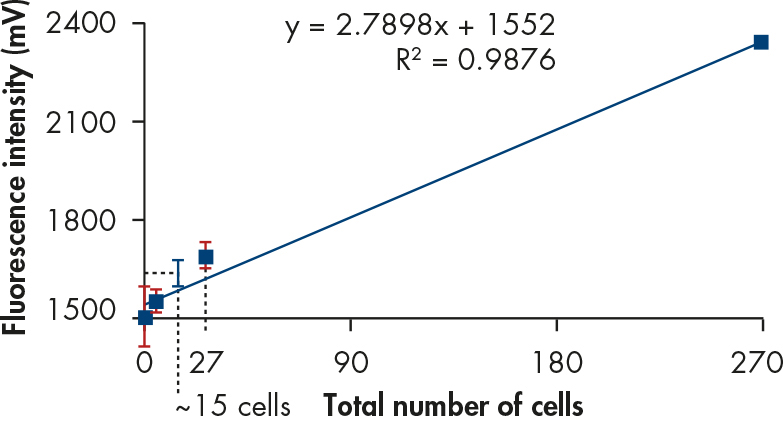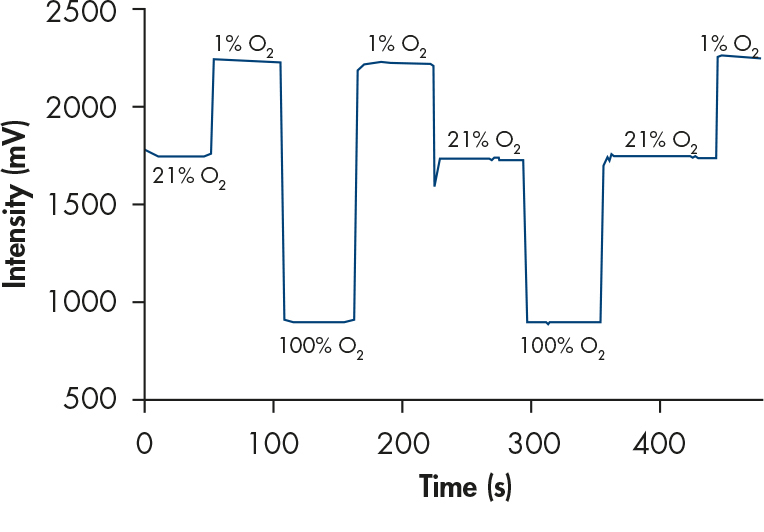Required sensitivity, spectra, medium. Advice and guidance from DIALUNOX.
Flexible Options to Meet Your Needs
Application


Get your specific wavelength combination. Optimize for required dynamic range. Integrate into your system.

Acceptance/QC criteria. Certificate of analysis. Flexible volumes from <100 to <<1000 p.a..
Oil and algae in water
A small mobile, handheld system (ESElog plus cuvette holder) was used to check water quality and determine possible contamination in drinking water reservoirs. An oil-contaminated sample, an algal sample, and a water blank sample were measured, with the signal being recorded continuously.
The black trace shows strong responses for both lubricator oil and algae: the response to algae is undoubtedly due to NADPH fluorescence, which is used routinely as a marker for aquatic biomass. Clearly this measurement is open to interference from oils and other aromatic hydrocarbon products. The additional use of the second channel, which is sensitive to generic algal chlorophylls, effectively differentiates algal fluorescence from fluorescence due to oils. The use of chlorophyll-specific wavelength sets may also be used to differentiate different algal types.
Viable E. coli cell test
The resazurin system measures the toxic effects of unknown compounds by assessing the metabolic activity of living cells. Viable cells take up resazurin and reduce it internally to resorufin. This fluorescent compound and the reduction-oxidation reaction can be monitored. Only viable cells can reduce resazurin, therefore any change in fluorescence intensity is due to the presence of viable cells.
A dilution series of Escherichia coli K12 cells was prepared, resazurin (Sigma- Aldrich) was added, and the experiment conducted according to the manufacturer’s instructions. Fluorescence was measured in a 1 cm quartz cuvette using the ESElog with cuvette holder (excitation 550 nm, emission 600 nm). A total of 27 cells in a total volume of 300 μl were detected. Extrapolation of the data to the ± 3x standard deviation show that the limit of detection was around 15 cells in 300 μl and this sample can be distinguished from the blank (resazurin containing buffer without cells).
Detecting oxygen levels in air
An oxygen sensor based on heavy metal chelates and a collisional oxygen quenching mechanism was used to determine the oxygen content in air using fluorescence. The ESElog was used to excite the oxygen sensor and detect light emitted by it. The response of the signal is very fast (in the milli second range) and is reversible.



